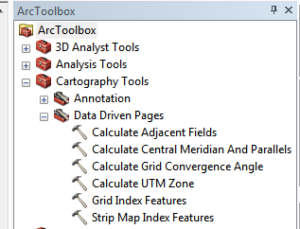Spurred by the release of 1.1 billion gallons of coal ash slurry from a surface impoundment at the Tennessee Valley Authority’s Kingston, TN plant, the EPA proposed two regulatory options in 2010 to address potential risks to human health and the environment from the mismanagement of Coal Combustion Residuals (CCR).
The two regulatory options were structured separately, one under RCRA Subtitle C and the other under RCRA Subtitle D. The Subtitle C regulation proposed to categorize CCR as a hazardous waste, and require CCR generators to dispose of it as such. The Subtitle D regulation proposed to establish national standards for landfills and surface impoundments that receive CCR while maintaining them under a solid waste categorization.
In 2015, Coal-Fired Power Plants supplied approximately 33% of U.S. electric power.
The United States possesses more recoverable coal reserves than any other country in the world. Of the U.S. endowment, some of the cleanest and most accessible reserves are found in the Rocky Mountain and Great Plains Region, characterized by subbituminous low-sulfur deposits that lie in thick, near-surface beds, offering substantially greater ease of access than Appalachian coal.
The Powder River Basin in Wyoming and Montana alone contributed over 40% of coal mined in the U.S. in 2011. Rocky Mountain and Great Plains coal deposits, comprised of the Power River Basin deposit, along with similar deposits in Montana, North Dakota, Wyoming, Colorado, and Utah, account for nearly 50% of U.S. coal reserves.
According to the 2015 U.S. Annual Coal Report published by the U.S. Energy Information Administration, surface coal mining operations, located predominantly in the aforementioned region, provided between 26,000 and 37,000 U.S. jobs.
Not only do Rocky Mountain and Great Plains coal reserves include a valuable portion of U.S. natural resources, but they also supply a significant percentage of U.S. energy and numerous jobs. Amidst a rebounding U.S. job market and economy, these resources and job numbers mean a great deal.
Mismanaged Coal Combustion Residuals (CCR) can pose a widespread threat to human health and the environment.
Coal ash, produced from the combustion of coal for power generation, contains elements such as arsenic, cadmium, and mercury. Although these heavy metals are naturally occurring elements found throughout the earth’s crust, mismanaging high-level concentrations, typically of anthropogenic origin, can easily contaminate groundwater, surface water, and the air.
Arsenic, cadmium, and mercury exposure, even at low levels, has been linked to multiple-organ systemic damage. Additionally, all three are either known or probable human carcinogenic (cancer-causing) agents. Consequently, attentive handling and disposal practices are essential to the mitigation of potential health and environmental risks.
In December of 2014, after eight public hearings and countless public comments, the “Final Rule: Disposal of Coal Combustion Residuals from Electric Utilities” proposed under RCRA Subtitle D, was signed. This new set of standards was entered in to the Federal Register on April 17, 2015.
The Final Rule established technical site requirements for both new and existing CCR landfills and surface impoundments to address the primary risks associated with the storage and disposal of coal combustion residuals. These technical requirements address several components:
- Reducing the Risk of Catastrophic Failure
- Protecting Groundwater
- Operating Criteria
- Record Keeping, Notification, and Internet Posting
- Inactive Units
- State Programs
- Closure
- Beneficial Use
Although the more lenient of the two EPA-proposed regulations was used to structure the Final Rule, the technical requirements are stringent, and call for closure of any units that are noncompliant.
To effectively and economically utilize our valuable coal reserves while protecting human health, the environment and our job economy, strategic planning and careful attention to detail is imperative during every step in the process. From well-structured permitting to deliberate design and rigorous monitoring, every detail is vital.
The Final Rule: Disposal of Coal Combustion Residuals from Electric Utilities can be found here:
httpss://www.epa.gov/coalash/coal-ash-rule
A summarized Fact Sheet for the Final Rule on Disposal of Coal Combustion Residuals from Electric Utilities can be found here:
httpss://www.epa.gov/sites/production/files/2014-12/documents/factsheet_ccrfinal_2.pdf
WET’s permitting, environmental, and engineering team has extensive experience dealing with responsible CCR management at large coal-fired power plants; including landfill and surface impoundment permitting, well installation and monitoring, and periodic reporting.
Contact our team to ensure that all projects:
- Undergo proper evaluation early in the permitting process
- Are designed efficiently and economically
- Maintain high environmental standards throughout the duration of the project





